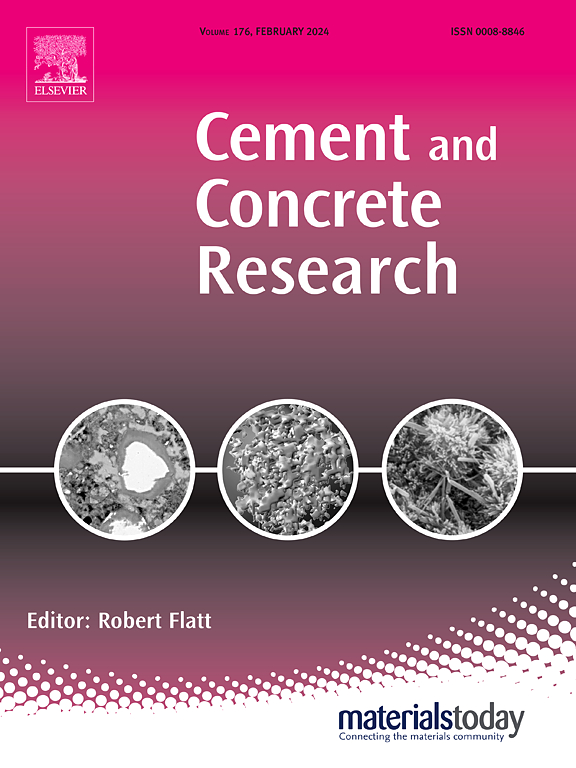Reduction of drying shrinkage via C-S-H densification: The role of early-age thermal history
IF 13.1
1区 工程技术
Q1 CONSTRUCTION & BUILDING TECHNOLOGY
引用次数: 0
Abstract
This study investigated the influence of curing temperature on the drying shrinkage behavior of cement paste by analyzing calcium silicate hydrate (C-S-H) microstructural changes. Ordinary Portland cement specimens were cured at 20, 60, and 80 °C and exposed to varying relative humidity conditions (11–95% RH). The microstructural evolution of C-S-H was quantitatively assessed using 1H NMR relaxometry and X-ray diffraction/Rietveld analysis.
Through evaluation of C-S-H density and specific surface area, we established that the densification mechanism induced by high-temperature curing mirrors the C-S-H stacking process during drying. This was supported by a consistent linear correlation between specific surface area and bulk density across all curing temperatures, indicating that high-temperature-cured specimens had already undergone partial shrinkage during curing. These findings provide a mechanistic explanation for the reduced drying shrinkage susceptibility of cement-based materials cured at elevated temperatures.
通过C-S-H致密化减少干燥收缩:早期热历史的作用
通过分析水化硅酸钙(C-S-H)微观结构变化,研究养护温度对水泥浆体干燥收缩行为的影响。普通硅酸盐水泥试件分别在20、60和80℃下养护,并暴露于不同的相对湿度条件下(11-95% RH)。采用1H NMR弛豫仪和x射线衍射/Rietveld分析定量评价C-S-H的微观结构演变。通过对C-S-H密度和比表面积的评价,我们确定高温固化引起的致密化机制反映了干燥过程中C-S-H的堆积过程。在所有固化温度下,比表面积和体积密度之间存在一致的线性相关性,这表明高温固化的试样在固化过程中已经经历了部分收缩。这些发现为高温固化水泥基材料的干燥收缩敏感性降低提供了机理解释。
本文章由计算机程序翻译,如有差异,请以英文原文为准。
求助全文
约1分钟内获得全文
求助全文
来源期刊

Cement and Concrete Research
工程技术-材料科学:综合
CiteScore
20.90
自引率
12.30%
发文量
318
审稿时长
53 days
期刊介绍:
Cement and Concrete Research is dedicated to publishing top-notch research on the materials science and engineering of cement, cement composites, mortars, concrete, and related materials incorporating cement or other mineral binders. The journal prioritizes reporting significant findings in research on the properties and performance of cementitious materials. It also covers novel experimental techniques, the latest analytical and modeling methods, examination and diagnosis of actual cement and concrete structures, and the exploration of potential improvements in materials.
 求助内容:
求助内容: 应助结果提醒方式:
应助结果提醒方式:


